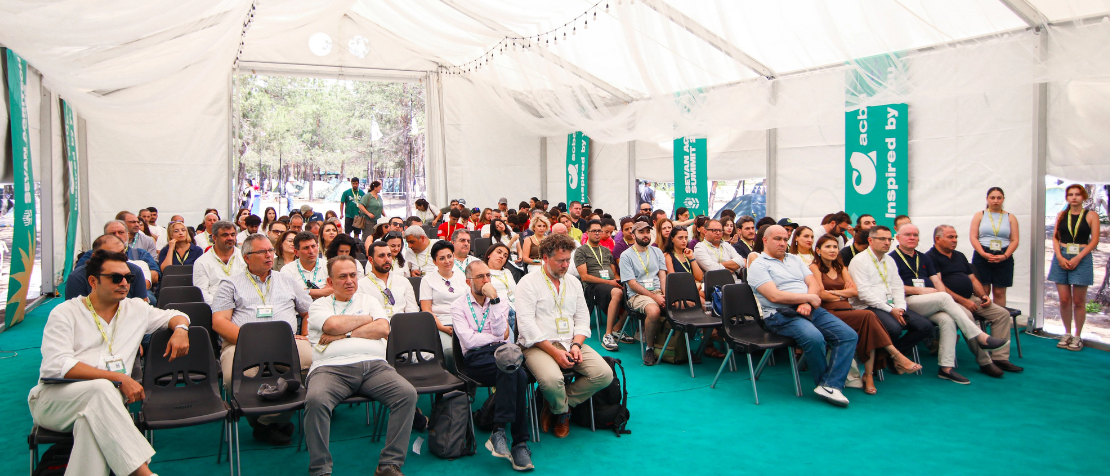Digital innovation and AI are the future of Armenia’s agrifood sector

©FAO/Anna Poghosyan
Around the world, digital innovation is transforming the landscape of agriculture by empowering farmers, transforming value chains and redefining how food is produced, distributed, and consumed. In an era marked by climate shocks, natural resource scarcity, and shifting demographics, technologies such as artificial intelligence, precision farming, and big data are no longer optional – they are essential enablers of sustainability, productivity, and resilience.
The Food and Agriculture Organization of the United Nations (FAO) is driving the digital transformation of agriculture through various projects and promoting innovation in the sector. As part of this effort, FAO is supporting the AgriTech Summit, held from 23 to 25 July 2025 during the Sevan Startup Summit. This specialized forum provides a dynamic space for dialogue, knowledge sharing, and partnerships. The 2025 Summit brought together farmers, tech startups, government officials, researchers, and development partners to explore how emerging technologies—especially AI and digital tools—can support the development of sustainable, efficient, and climate-resilient agrifood systems in Armenia.
Speaking at the opening of the Summit, Botagoz Nartayeva, FAO Armenia Country Programme Coordinator, highlighted the transformative power of digitalization in advancing rural development and creating new economic opportunities, including for youth, women and people with disabilities. She also emphasized FAO’s close cooperation with the Government of Armenia and the Ministry of Economy to support the digital transformation of key agricultural sectors.
“By investing in digital skills and inclusive digital agriculture,” Nartayeva noted, “we can unlock new economic opportunities, and build a more resilient and competitive agriculture sector for Armenia.”
It is critical that technologies be tailored to local realities, are people-centered, and embedded in inclusive strategies to maximize its benefits for the transformation of agrifood systems. This was reiterated by Daniela Di Gianantonio, Head of Digital Agriculture at FAO’s Regional Office for Europe and Central Asia, who delivered an expert presentation titled “Feeding the Future: The Role of AgriTech in Building Sustainable Agrifood Systems” at a high-level keynote session on 24 July.
Complementing this perspective, Diana Gurzadyan, FAO Digital Agriculture Specialist, gave a presentation on “Building an AI-Ready Workforce for Agriculture," which focused on the importance of equipping farmers, students, and professionals with the skills and knowledge necessary to adopt and effectively apply digital tools. Diana emphasized that “we need long-term investment in digital literacy and vocational training to ensure no one is left behind in this transformation,” she said.
The FAO briefing paper “Digital Agriculture Transformation for Sustainable Rural Development” underlines that integrating digital technologies into agriculture can not only boost productivity but also strengthen rural livelihoods, enhance climate adaptation, and open new opportunities for youth and women. The report underscores that countries investing in digital agriculture are better positioned to meet food security goals and achieve sustainable development.
The AgriTech Summit concluded on 25 July with a farmers’ session, designed to bring together local farmers to directly engage with FAO experts, tech innovators, and policymakers. This session bridged high-level discussions with practical realities in the field, providing an opportunity for farmers to share their experiences, express their needs, and learn about how digital solutions can be adapted to Armenia’s diverse agricultural contexts. For FAO, the session offered valuable grassroots insights that will inform future programming and ensure that digital transformation is inclusive and locally grounded.

© FAO/Anna Poghosyan
Publication: Digital Agriculture Transformation for Sustainable Rural Development
